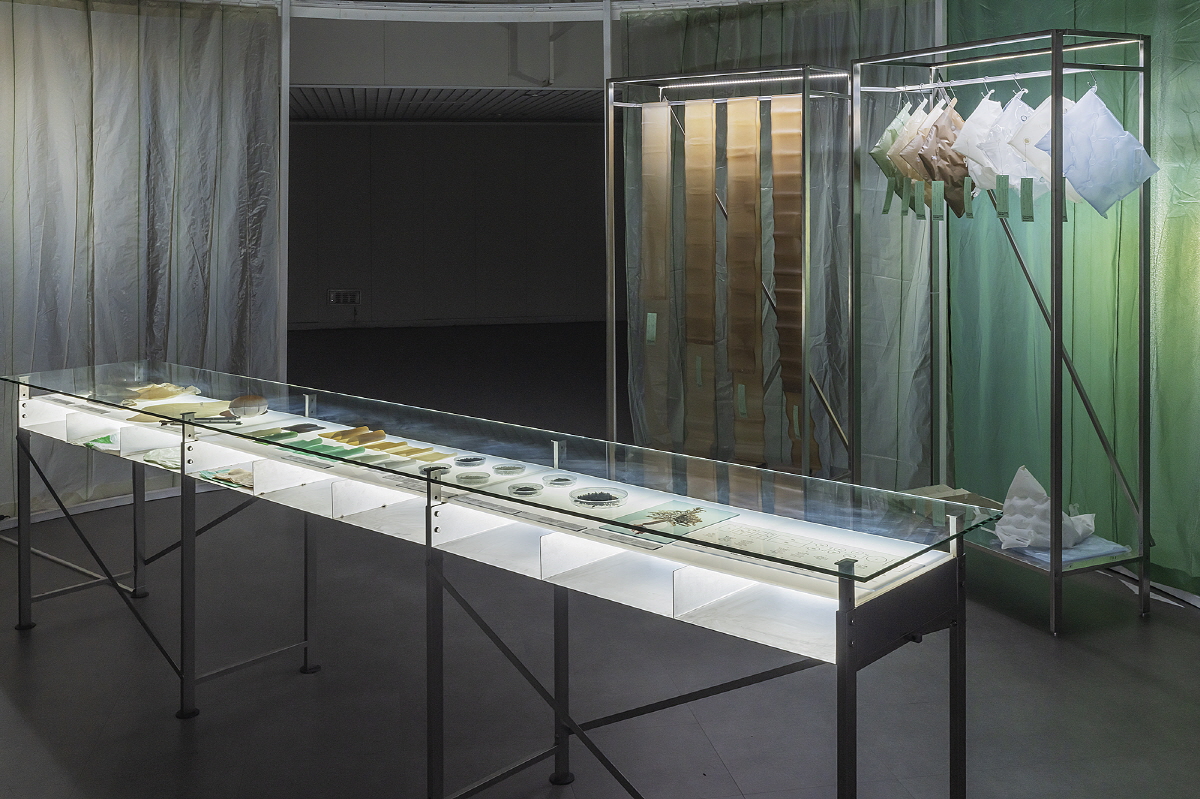SPACE January 2024 (No. 674)

Installation view of Air Cap-Seaweed ©CJY ART STUDIO (Junyong Cho)
What conditions are necessary for materials to become construction materials, particularly when hoping to cause no harm to our already ailing Earth? The exhibition ‘Circular City’, curated by BARE (co-principals, Jeon Jinhong, Choi Yunhee), focuses on the concepts of ‘circulation’ and ‘symbiosis’, exploring the potential use of biodegradable materials such as seaweed by-products as an alternative to plastic. This exhibition was held at the Asia Culture Center from Nov. 10 – 19, 2023 in collaboration with the 5th Gwangju Folly Re:Folly’ and the ‘ACT Festival 2023’. The exhibition, which aimed to be a laboratory for eco-friendly materials and to act as a space for sensorial engagement, was organised into three main sections. The kinetic installation, Inhabiting Air-Fragment A, presented in the ‘Movement for Change’ section, is a work that responds to external environmental changes as the insulating air barrier contracts or expands. This structure, which focuses on mobility and variability, demonstrated the potential of combining conventional plastic air shields with biodegradable plastic air shields. The concept of circulation for sustainable cities is based on finding new uses for industrial by-products and waste, and finding materials that can easily degrade after use. In the ‘From the Ocean’ section, raw materials extracted from discarded parts such as seaweed branches are presented through the Air Cap series, demonstrating the process of transforming them into seaweed biodegradable vinyl through a compound manufacturing process. Even if an environmentally friendly material is developed, it cannot become a universal material unless an industrial ecosystem is created to mass produce it. The video Where It All Begins, presented in the ‘Re-Born’ section, reevaluates the seaweed by-products that have been treated as waste and dumped in the sea. It conveys the significance of new material development centred around Goheung, Jeollanam-do, through the voices of the local community. Further experimentation with biodegradable construction materials obtained from the sea is expected to extend to the ‘Air Folly’, a space to be constructed at the 2024 Gwangju Folly ‘Re:Folly’.





